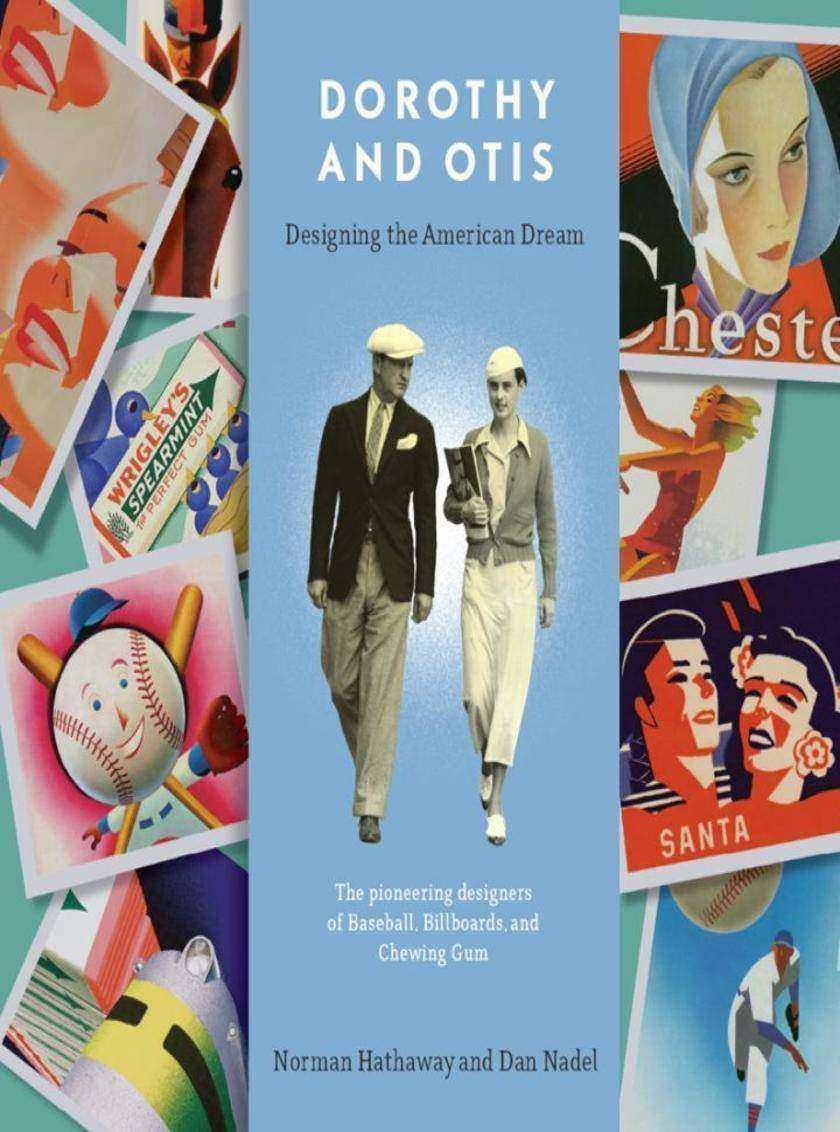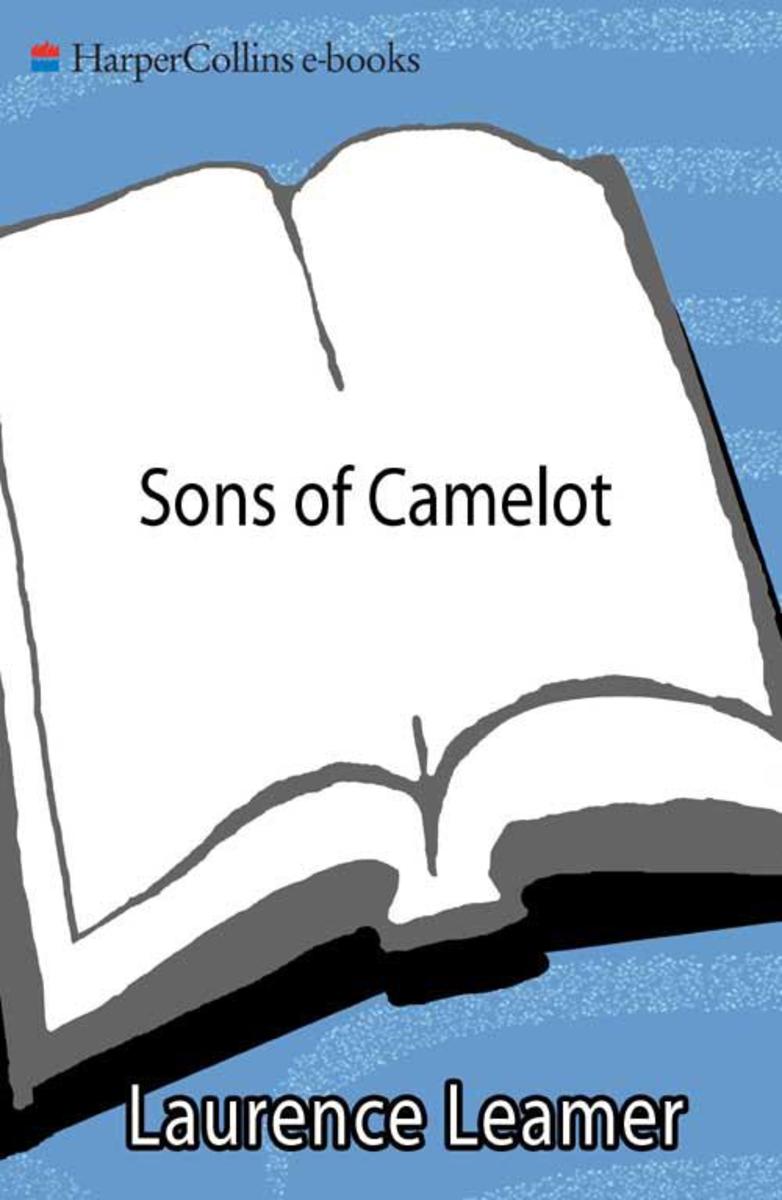
Six-Word Memoirs on Love and Heartbreak
¥56.15
Love wounds the heart and soul . . . From the editors of the New York Times bestseller Not Quite What I Was Planning comes another collection of terse true tales this time simple sagas exploring the complexities of the human heart. Six-Word Memoirs on Love Heartbreak contains hundreds of personal stories about the pinnacles and pitfalls of romance. Brilliant in their brevity, these insightful slivers of passion, pain, and connection capture every shade of love and loss six words at a time.

That Quail, Robert
¥55.38
The acclaimed story of the little bird that won the nation's heart.

On Your Mark, Get Set, Grow!
¥88.56
Recognizing a need for puberty education books for younger children, award-winning author Lynda Madaras published Ready, Set, Grow!: A "What's Happening to My Body?" Book for Younger Girls in 2003 to widespread acclaim. Now, in her uniquely straightforward, warm, and funny style, Madaras introduces On Your Mark, Get Set, Grow!: A "What's Happening to My Body?" Book for Younger Boys.Responding to real-life questions and concerns from younger boys about their changing bodies, Madaras covers a wide range of topics at a reading and understanding level that's just right for them: the growth of sex organs, body hair, and facial hair; weight and height spurts; the unwelcome appearance of acne and body odor; shaving; circumcision; erections and ejaculation; feelings about puberty; and bullying.

Confessions Of an Art Addict
¥83.08
A patron of art since the 1930s, Peggy Guggenheim, in a candid self-portrait, provides an insider's view of the early days of modern art, with revealing accounts of her eccentric wealthy family, her personal and professional relationships, and often surprising portrayals of the artists themselves. Here is a book that captures a valuable chapter in the history of modern art, as well as the spirit of one of its greatest advocates.

Wonders of Life
¥168.37
LifeWhat is LifeWhere did it come fromWhy does it end?In this beautiful companion book to the Science series Wonders of Life, professor Brian Cox takes us on an incredible journey to discover how a few fundamental laws gave birth to the most complex, diverse, and unique force in the universe life itself.Earth is home to an estimated one hundred million species yet each one is governed by the same laws. Light, gravity, time, matter, and energy are the building blocks of everything, from the smallest microbe to the biggest galaxy. What is true for a bacterium is true for a blue whale. This is the story of the amazing diversity and adaptability of life, told through the fundamental laws that govern it. Through his voyage of discovery, Brian explains how the astonishing inventiveness of nature came about and explores the milestones in the epic journey from the origin of life to modern civilization.From the vast networks of subterranean fresh-water caverns of the Yucatan peninsula to the unique and precious island of Madagascar, Brian brings readers on a thrilling adventure to the earth's most remote locations, where the wonders of life are on spectacular display. Along the way, the biggest scientific questions are answered: What is lifeWhere did it come fromWhy does it end?Relying on the latest advances in science as well as the cutting-edge graphics used in the visually stunning bestsellers Wonders of the Solar System and Wonders of the Universe, Brian uncovers the secrets of life in revolutionary detail.

100 Simple Secrets of Happy Families
¥67.09
The Simple Science of a Happy FamilyFrom raising children to getting along with in-laws, what do people with close and loving families do differently than those with strained or unfulfilling relationshipsSociologists, therapists, and psychiatrists have spent entire careers investigating the ins and outs of family dynamics, yet their findings are inaccessible to ordinary people, hidden in obscure journals to be shared with other experts. Now, David Niven, the international bestselling author of The 100 Simple Secret series has collected the most current and significant data from more than a thousand of the best scientific studies on families and then spelled out the findings in plain English.The advice is based not on one person's unique experiences or opinions, but offers for the first time the research of noted scientists studying average American families. These findings have been boiled down to one hundred essential ways to find and maintain love, joy, and satisfaction in all family relationships. Each statistic is accompanied by a true story about a real family showing the results in action.Don't Forget the Past: Parents who share stories of family history with their children create higher levels of concern for family members and increase the likelihood of their children's happiness.No Price Tag: Once basic necessities are met, the increasing economic status of one's family has zero effect on the likelihood of feeling satisfied with life.Let Every Opinion Be Heard: Senior citizens having trouble living in their own homes are 84 percent more likely to be satisfied with their housing situation if they feel as if their concerns are an important part of selecting a new home or facility.The Greatest Gift: Life satisfaction is 72 percent more likely among those who feel content with their family life.

Blind Spot
¥157.15
What can chess masters teach us about how humans become expertsWhy can't race car drivers explain decisions they've made behind the wheel?What does predicting the winner of a soccer match say about our ability to make the right choiceWhen we talk about experts, we typically have bought into the idea that they have all the answers. Now, in this groundbreaking book, Gordon Rugg exposes the surprising ways in which all people tend to make the same sorts of mistakes, regardless of what field they are in, how smart they are, or even their level of expertise. Focusing on why and how we make decisions, Rugg offers insight into what motivates us, how we fail to find the answers we are looking for, how we can learn to ask the essential questions, and more. Rugg has devoted his life to learning how experts solve problems. He gained international attention after arguing persuasively that the famous Voynich Manu* is a hoax. Now, he demonstrates his techniques in the Verifier Method, which can be applied to any seemingly unsolvable problem.Drawing on his personal odyssey in the field of human expertise, Rugg makes astute and entertaining conclusions about how and why we inevitably fail, and explains how to make better mistakes, work backward, and reengineer the ways we pursue success.

George Lucas's Blockbusting
¥168.37
A comprehensive look at 300 of the most financially and/or critically successful motion pictures of all time many made despite seemingly insurmountable economic, cultural, and political challenges set against the prevailing production, distribution, exhibition, marketing, and technology trends of each decade in movie business history.

We Are Indie Toys
¥168.37
The indie world is producing extraordinary toy characters but little is known about the designers creating them or the processes used to make them. We Are Indie Toys! profiles the most interesting toymakers and reveals how they turn their unique ideas into one-of-a-kind collectibles.

Deadly Departure
¥72.99
The in-flight explosion of TWA Flight 800 on July 17, 1996, was one of the deadliest disasters in American history, spurring the most expensive airline investigation ever undertaken by the U.S. government. To this day the crash remains clouded in doubt and shadowed by suspicion of a government conspiracy.If there was any conspiracy to hide the truth about what really happened to Flight 800, it began long before the crash. Past crashes tell the story: What happened on Flight 800 has happened before and will again, unless drastic changes are made. Now veteran journalist Christine Negroni reveals what the commercial aviation industry has known for more than thirty-five years that during flight confined vapors in the fuel tanks can create a bomb like environment. It takes only a small energy source to ignite it.TWA Flight 800 was the fourteenth fuel tank explosion on a commercial airliner in thirty-five years. Yet each and every time, the airline industry persuaded regulators to deal with the symptoms of the problem and ignore the cause. When investigators could not immediately determine what happened, they were finally forced to look at the bigger picture. And, for the first time, this book exposes the hubris of aircraft manufacturers who knew all along, but dismissed as acceptable, the risk of fuel tank explosions.Deadly Departure shines a spotlight on the chaos behind the most massive crash investigation ever conducted, how the White House had to intervene between feuding investigators, and the surprising stories behind the missile theory conspiracies. It also tells the stories of the passengers and their families, the people of TWA and Boeing, the rescue and crisis workers, and the investigators and scientists involved illustrating the devastating effects on human lives. An impeccably researched, eye-opening examination of one of the great disasters of our time, Deadly Departure is a stunning exposé of how industry pressure continues to undermine regulatory policy, placing air travelers' lives at risk.

Dorothy and Otis
¥280.71
Dorothy and Otis Shepard are the groundbreaking heroes of North American visual culture. They were the first American graphic designers to work in multiple mediums and scales, but despite the brilliance of their work, their names are little known today. With 330 stunning, colorful images, Dorothy and Otis chronicles their story for the first time. It explores the Shepards' penchant for abstraction and modernism, and shows how the advent of billboard advertising inspired their creativity their large campaigns matched the grandeur of their lifestyle. Throughout, this book demonstrates how their work influenced all aspects of consumer culture, from the styling of Wrigley's Gum and the Chicago Cubs to the design of Catalina Island, which Charlie Chaplin, Clark Gable, and other celebrities frequented.As Dorothy and Otis brings these artists to life, it elevates them to their rightful place in popular culture and makes clear how their work shaped the American dream.With more than 330 full-color photographs throughout

Sons of Camelot
¥88.33
One of Bobby Kennedy's first acts after JFK's assassination was to write a letter to his eldest son, reminding him of the obligations of his name. Bobby sent the letter to eleven-year-old Joe, but the message was meant for all his sons and nephews.Sons of Camelot is the compelling story of that message and how it shaped each Kennedy son and grandson in the aftermath of President John F. Kennedy's death. Based on five years of rigorous research and unprecedented cooperation from both the Kennedys and the Shrivers, Sons of Camelot examines the lives characterized by overwhelming drama -- from the most spectacular mishaps, excesses, and tragediesto the remarkable accomplishments that have led to better lives for Americans and others around the world.The third volume in Laurence Leamer's bestselling history of America's first family, Sons of Camelot chronicles the spellbinding journey of a message sent from a father to his son ... from a president to his people.

Photo by Sammy Davis, Jr.
¥280.42
Sammy Davis, Jr. will forever be remembered as one of America's finest entertainers. An all–around performer who could sing, dance, and act, Davis broke racial barriers in the entertainment world and became the only non–white member of the Rat Pack. Only now, however, is Davis's talent as a photographer finally being recognized. In this previously unpublished collection of black and white photography, readers will be fascinated by Davis's portrayals of A–list performers, iconic world leaders, and scenes from everyday life. Davis's subjects include dozens of classic celebrities–such as Frank Sinatra, Marilyn Monroe, Paul Newman, and James Dean–who are often photographed at their most casual and revealing moments. Accompanying the pictures is an assortment of remembrances by Burt Boyar, a longtime friend and traveling companion of Davis who collaborated with the entertainer on both of his autobiographies. Through a series of memorable anecdotes, Boyar reflects on Davis's many achievements as well as the private moments they shared as friends. Along with Davis's candid shots of ordinary life–from a group of children laughing to a baseball game at the Washington Monument–these stories reveal a side of the performer far removed from his Rat Pack persona. The release of this book will also coincide with the release of Burt Boyar's upcoming documentary, Sammy Speaks, created from his extensive archive of taped conversations with the star.

It Books
¥95.11
Tabatha is back to share her secrets of business success . . .With her characteristic savvy expertise and no-nonsense advice, the perfectly coiffed celebrity hairstylist, Tabatha Coffey, returns with her second book, teaching readers that the secret of success is taking charge of your priorities, your future, and your life. Fans of her hit show, Tabatha Takes Over, value Tabatha's sound approach to overhauling failing businesses, and now, in Own It!, she takes to the page to reach out to anyone with a dream: whether you're just beginning, revamping your career, or starting your own enterprise.Sharing her blunt but rock-solid wisdom, Tabatha provides tips for every aspect of business from entrepreneurship, to customer service, to management as well as on the home front, to help women seeking to balance their family lives with their careers. Filled with stories about real people who have faced challenging transitions, in addition to anecdotes from Tabatha's own experiences, this book reveals, through her unflinching honesty, Tabatha's commitment to the dreams and goals of her readers, and her never-say-never attitude when it comes to bringing them to life. Success is the result when you Own It! in all aspects of your life, and Tabatha breaks it down step-by-step as your straight-shooting personal coach to show you how it's done.

Unflinching Courage
¥90.77
From New York Times bestselling author and groundbreaking politician Senator Kay Bailey Hutchison comes a history of the extraordinary women who shaped the state of Texas.The only woman ever to represent Texas in the United States Senate, Kay Bailey Hutchison has been a trailblazer in the Lone Star State. Nevertheless, Hutchison is just one of many women who, for two hundred years, have embodied what we've come to recognize as the spirit of Texas rugged independence, fierce loyalty, and an unflappable entrepreneurial streak. In Unflinching Courage, Senator Hutchison tells the dynamic history of her home state through the lives of some of these pioneering women and their remarkable achievements.Among the brave souls Senator Hutchison profiles are Jane Wilkinson Long, the Mother of Texas, and others who claimed a stake in the land when it struggled under Spanish and Mexican rule; Dilue Rose Harris, whose memoir of the Runaway Scrape exhibits the strength so many women were forced to call upon as the Texas Revolution drew able-bodied husbands, sons, and brothers to the battlefield; Margaret Houston and Emily Austin Bryan Perry, who stood behind the great leaders of a burgeoning republic and helped usher in a new era of statehood; Henrietta King, Molly Goodnight, Sarah Cockrell, and Oveta Culp Hobby, ranchers and entrepreneurs who have helped Texas thrive; and numerous others who valiantly held their ground in the face of raids and unimaginable violence. In Unflinching Courage, Senator Hutchison pays tribute to these extraordinary Texan women whose lives inspire us today and will continue to do so for generations to come.

Remembering Whitney
¥94.10
Honest and heartbreaking, a mother's story of tears, joy, and her greatest love of all—her daughter, Whitney On the eve of the 2012 Grammy Awards, the world learned of a stunning tragedy: Whitney Houston, unquestionably one of the most remarkable and powerful voices in all of music, had been silenced forever. Over the weeks and months that followed, family, friends, and fans alike tried to understand how such a magnificent talent and beautiful soul could have been taken so early and so unexpectedly. Glamorous and approachable, captivating and sweet, Whitney had long ago won the hearts of America, but in recent years her tumultuous personal life had grabbed as many headlines as her soaring vocal talents. Her sudden death left behind not only a legacy of brilliance, but also painful questions with no easy answers. Now, for the first time, the beloved superstar's mother, Cissy Houston—a gospel legend in her own right—relates the full, astonishing scope of the pop icon's life and career. From Whitney's earliest days singing in the church choir to her rapid ascent to the pinnacles of music stardom, from her string of number one hits to her topping the Hollywood box office, Cissy recounts her daughter's journey to becoming one of the most popular and successful artists of all time. Setting the record straight, Cissy also speaks candidly about Whitney's struggles in the limelight, revealing the truth about her turbulent marriage to singer Bobby Brown, her public attempts to regain her celebrated voice, and the battle with drugs that ultimately proved too much. In this poignant and tender tribute to her "Nippy," Cissy summons all her strength to reveal not only Whitney the superstar, but also Whitney as a sweet girl, a bright-eyed young woman, and a deeply caring mother. Complete with never-before-seen family photographs, Remembering Whitney is an intimate, heartfelt portrait of one of our most revered artists, from the woman who cherished her most.

Storm Surge
¥155.02
Was Sandy a freak of nature, or the new normalOn October 29, 2012, Hurricane Sandy reached the shores of the northeastern United States to become one of the most destructive storms in history. But was Sandy a freak event, or should we have been better prepared for itWas it a harbinger of things to come as the climate warmsIn this fascinating and accessible work of popular science, atmospheric scientist and Columbia University professor Adam Sobel addresses these questions, combining his deep knowledge of the climate with his firsthand experience of the event itself. Sobel explains the remarkable atmospheric conditions that gave birth to Sandy and determined its path. He gives us insight into the science that led to the accurate forecasts of the storm from genesis to landfall, as well as an understanding of why our meteorological vocabulary failed our leaders in warning us about this unprecedented weather system--part hurricane, part winter-type nor'easter, fully deserving of the title "Superstorm." Storm Surge brings together the melting glaciers, the warming oceans, and a broad historical perspective to explain how our changing climate and developing coastlines are making New York and other cities more vulnerable. Engaging, informative, and timely, Sobel's book provokes us to think differently about how we can better prepare for the storms in our future.

The Journey Home
¥88.56
The legendary New York Yankees catcher tells the incredible and unexpected story of his career, his past, and the father-son bond that fueled his love of the gameFor seventeen seasons, the name Jorge Posada was synonymous with New York Yankees baseball. A fixture behind home plate throughout the Yankees' biggest successes, Jorge worked tirelessly to become the Yankees' star catcher, and in the years that followed, his accomplishments, work ethic, and leadership established him as one of the greatest Yankees ever to wear pinstripes.Now, in this long-awaited memoir, Jorge details his road to home plate, sharing a remarkable generational account of his journey from the ball fields of Puerto Rico to the House That Ruth Built. Offering a view from behind the mask unlike any other, Jorge discusses the key moments, great plays, and big-league personalities that marked Yankees baseball for a generation. With pitch-by-pitch recall, he looks back across the years, going inside friendships forged on the field and explaining how as part of the Core Four alongside Derek Jeter, Andy Pettitte, and Mariano Rivera he helped to reestablish the Yankees as a dynasty and win five World Series. Along the way he tells a story of how his team, along with manager Joe Torre, became his home away from home, teaching him that family isn't defined by blood, but by the people who supported him through it all. Going beyond his all-star career, Jorge also shares his life in full for the first time. Examining how his path to the big leagues began in the most unexpected of ways, Jorge digs into his cultural roots in Puerto Rico, the Dominican Republic, and Cuba to illuminate three generations of cherished father-son relationships that have made him the man he is today. At the center is the deep bond he shares with his father and namesake, Jorge Sr., who escaped Cuba and helped to mold his son into a ballplayer, honing his talent and instilling in him the drive necessary to fulfill his childhood dream of playing in the Bronx.More than just a baseball story, The Journey Home is a tale of two families the inspiring yet challenging family Jorge was born into, and the adoptive Yankees family that catapulted him to glory. Complete with sixteen pages of color photographs, this touching and earnest memoir is a testament to hard work, brotherhood, and the generational gift of baseball between fathers and sons.

Daughters of Men
¥90.73
From actress Sanaa Lathan to Georgia State Supreme Court chief justice Leah Ward Sears, many African-American women attribute much of their success to having a positive father figure In Daughters of Men, author Rachel Vassel has compiled dozens of stunning photographs and compelling personal essays about African-American women and their fathers. Whether it's a father who mentors his daughter's artistic eye by taking her to cultural events or one who unwaveringly supports a risky career move, the fathers in this book each had his own unique and successful style of parenting. The first book to showcase the importance of the black father's impact on the accomplishments of his daughter, Daughters of Men provides an intimate look at black fatherhood and the many ways fathers have a lasting impact on their daughters' lives.

HarperCollins e-books
¥123.24
She is an uncompromising apologist for the right and a hater of all things left. Is there anything she won't do or say to further her agendaThe answer is no.Brainless: The Lies and Lunacy of Ann Coulter is an unbridled look at a woman who twists the truth, misleads, plays loose with facts and allusions, and has been accused of plagiarism in hammering home her logic-defying arguments.Brainless illustrates the dangers, ironies, and hypocrisies of the Mistress of Malice. She spews her venom generously across the spectrum. Democrats and Liberals are just the beginning. If you're a woman (you shouldn't vote), gay (you're going to hell), a 9/11 widow (dancing on your murdered husband's grave) or Bill Clinton (slurs and charges too numerous to mention here), you will find yourself the object of her ire.Now it's time to turn the tables and take a good hard look at the High Priestess of Hypocrisy. Journalist Joe Maguire takes apart her arguments, picks apart her agenda, and gives us a look at the psychology and background of the woman who has reduced public political and cultural debate to browbeating and name-calling.Diligently researched (with source notes you can verify!), Maguire separates fact from myth and gives us an unvarnished look at the REAL Ann Coulter.Let's face it. You don't ever want to read a book by Ann Coulter. Read this so you don't have to!

Dark Forces
¥155.02
In this explosive expose, bestselling author Kenneth Timmerman gives us the real story of what happened in Benghazi, and the lengths to which the Obama administration has gone to hide the truth from the American people.Forget what you've heard: the September 11, 2012, attack on U.S. Government Compounds in Benghazi, which resulted in the deaths of four Americans, including our ambassador, was not a spontaneous demonstration. Nor was it planned by local militias.It was a state-sponsored terrorist attack with Iranian fingerprints all over it.What's more, the Obama administration knew from the first minutes of the attack that the compound had been targeted by an organized, professionally trained terrorist group. But the administration made up a ridiculous cover story about a nonexistent demonstration over an Internet movie in an attempt to fool the American public on the eve of a national election. The Iran-Contra scandal consumed Ronald Reagan's second term and nearly destroyed his presidency. Yet as bad as that was, what happened in Benghazi is much worse. As Ken Timmerman reveals in Dark Forces, the Benghazi affair will go down as the deepest, darkest, dirtiest political scandal of recent American history. And for all the coverage it has received, the real story has still not been told. It's a story of clandestine arms deliveries to Libyan rebels that wound up in the hands of Islamist guerrillas allied with al Qaeda. It's a story of a romantic American diplomat who gets caught up in a whirlwind beyond his comprehension or control. It's a story of bald-faced lies, heroic acts, and the deepest corruption. Dark Forces is much more than a retelling of what happened in Benghazi on September 11, 2012. It puts those events into the larger context of the Obama administration's policy toward the Middle East from Iran to the Arab Spring. It examines the administration's record of systematically supporting the Muslim Brotherhood and al Qaeda affiliated groups in their efforts to overthrow pro-U.S. autocrats in Tunisia, Egypt, and Libya. It shows how this went along with the administration's outreach to the Islamist regime in Iran. It argues that President Obama's obsessive outreach to the leadership of the Islamic Republic of Iran led the Iranian regime to dismiss him as a weak, ineffective leader who would not fight back when hit. And it reveals why and how this deadly combination cost the lives of four Americans, and today endangers thousands more.Written with the breakneck pacing of a political thriller, and drawing on exclusive research and privileged sources, Dark Forces tells the full story of Benghazi as you have never heard it before.




 购物车
购物车 个人中心
个人中心



